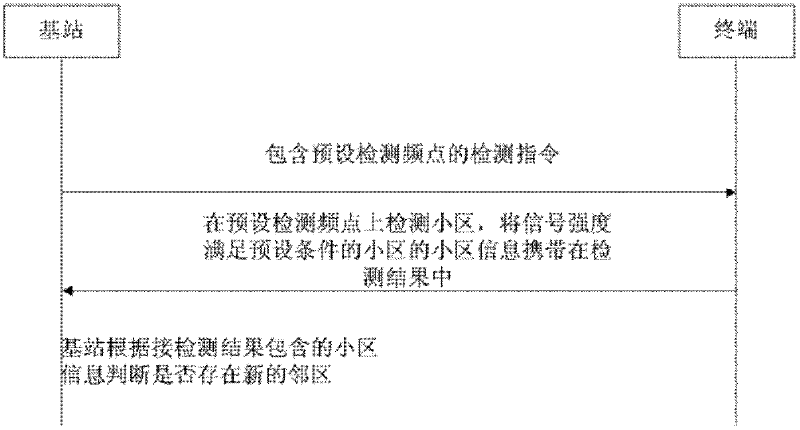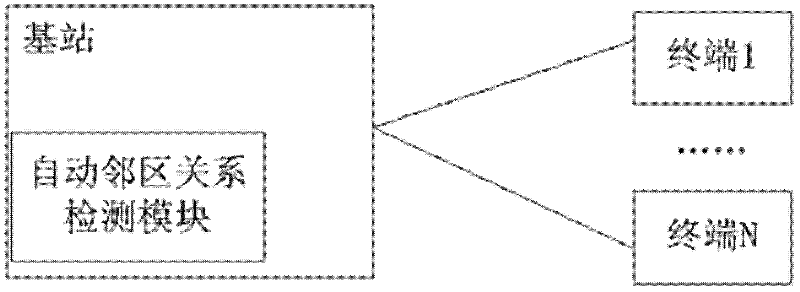Automatic detecting and adding methods and system for base station, terminal and adjacent region relation
A technology of automatic neighbor relationship and detection method, applied in the field of communication, can solve problems such as neighbor relationship not being added, not being added, handover failure, etc., to improve efficiency and success rate, reduce redundant information, and simplify The effect of the process
- Summary
- Abstract
- Description
- Claims
- Application Information
AI Technical Summary
Problems solved by technology
Method used
Image
Examples
Embodiment Construction
[0035] The present invention will be further described in detail below through specific embodiments in conjunction with the accompanying drawings.
[0036] Please refer to figure 1 , the automatic neighbor relationship detection method provided in this example includes the following steps:
[0037] The base station sends a detection command including preset detection frequency points to the terminal;
[0038] After receiving the detection instruction issued by the base station, the terminal obtains the preset detection frequency contained in the instruction, detects the cells on the preset detection frequency, and among the detected cells, the cells whose signal strength meets the preset conditions The information is carried in the detection result, and the detection result is fed back to the base station;
[0039]The base station judges whether there is a new neighbor cell according to the cell information contained in the received detection result, that is, judges whether ...
PUM
 Login to View More
Login to View More Abstract
Description
Claims
Application Information
 Login to View More
Login to View More - R&D
- Intellectual Property
- Life Sciences
- Materials
- Tech Scout
- Unparalleled Data Quality
- Higher Quality Content
- 60% Fewer Hallucinations
Browse by: Latest US Patents, China's latest patents, Technical Efficacy Thesaurus, Application Domain, Technology Topic, Popular Technical Reports.
© 2025 PatSnap. All rights reserved.Legal|Privacy policy|Modern Slavery Act Transparency Statement|Sitemap|About US| Contact US: help@patsnap.com



